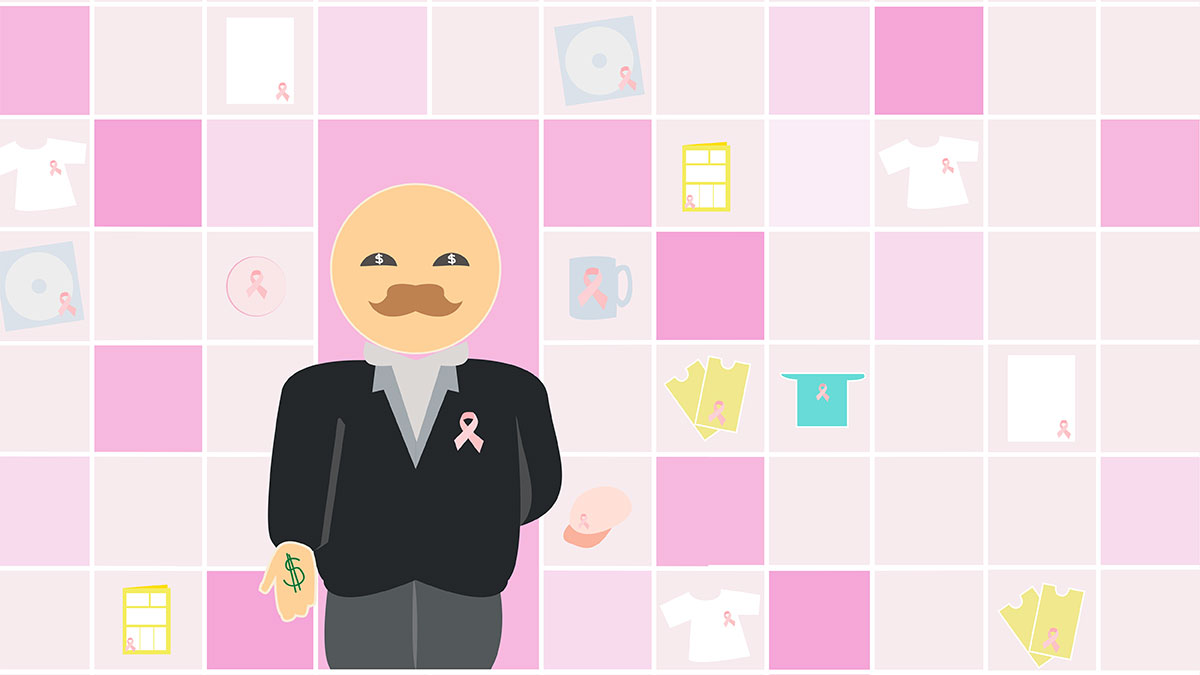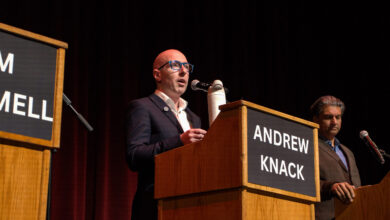Companies must stop pinkwashing and profiting from cancer
 Marie Espenido
Marie EspenidoIt’s the focal point of movies, songs, and comic books. Its symbols are readily available on pins, t-shirts and yogurt containers. Concerts, marathons, and fundraisers are held in its name. There is no disease that holds a more prominent place in public discourse than cancer.
It’s worth betting that every one of us has been personally affected by cancer in one way or another. About two in five Canadians will develop cancer at some point in their lives. This statistic may seem shocking considering how much attention we give to raising awareness (and funds) for cancer research. It seems like every time you turn a corner, there’s another fundraiser or another brand with a pink ribbon giving a portion of their funds to cancer-fighting programs. There of are a few explanations for this.
One is that typically the companies that use cancer symbols (most often pink breast cancer ribbons) to sell their products actually donate very little of their profits, or don’t specify which organization they donate to. There’s also sometimes a cap on the amount that a company will donate, or the donation requires the consumer to take extra steps, like filling out a survey online or something.
Even if companies are giving big donations to organizations that fight cancer, very little of the money spent towards “cancer research” goes into prevention. According to the Centre of Excellence in Cancer Prevention — a partnership between UBC and the Canadian Cancer Society — more than $500 million was spent on cancer research in 2010, but only 2.6 per cent of that money was directed towards prevention. It’s not particularly surprising, if you think about it. There are dozens of PSAs about the importance of self breast-exams and mammograms. For men, the focus is on testicular cancer — even Ryan Reynolds as Deadpool released a how-to video for self- examining, “because that bag of beans bouncing around in your hand could be trying to kill you.” Of course there’s no denying that early detection saves lives, but focusing on early detection at the expense of prevention provides a false sense that enough action is being taken, and puts individual onus on what is actually an institutional problem.
The other problem with brands using cancer symbols is that there isn’t any agency that controls who can use a pink ribbon on their label, so it’s hard to know which companies are actually combatting the cancer epidemic. In fact, some of the brands that use pink ribbons to make sales are actually contributing to the problem by selling products that contain toxins linked to higher cancer rates. This practice of profiting from fighting cancer while simultaneously contributing to it is known as “pinkwashing,” and it happens with everything from cosmetics containing cancer-causing chemicals, to vehicles emitting toxic fumes. The term comes from an organization called Breast Cancer Action, which calls itself “the watchdog for the breast cancer movement.”
Effectively combatting the epidemic of all types of cancer will require more than just coloured ribbon awareness campaigns. A real solution demands that legislators take action against substances and practices that are known to contribute to cancer, and against the companies that profit from it’s symbols.




